KATHMANDU: In the heart of Kathmandu, a small Newari girl adorned in vibrant red captivates onlookers with her divine presence.
From her crimson lips to her golden ornaments, every detail reflects the sacred aura that envelops her. She is Kumari, the Living Goddess, a symbol of purity and divinity.

Guardian of Kathmandu
Believed to possess the power of foresight, Kumari is regarded as the earthly manifestation of the goddess Taleju Bhawani and goddess Durga.
Clad in red, she is an embodiment of protection, safeguarding Kathmandu and its citizens from harm.
Many see her not just as a living entity but as a powerful deity with the ability to cure illnesses and remove obstacles on the path to happiness.
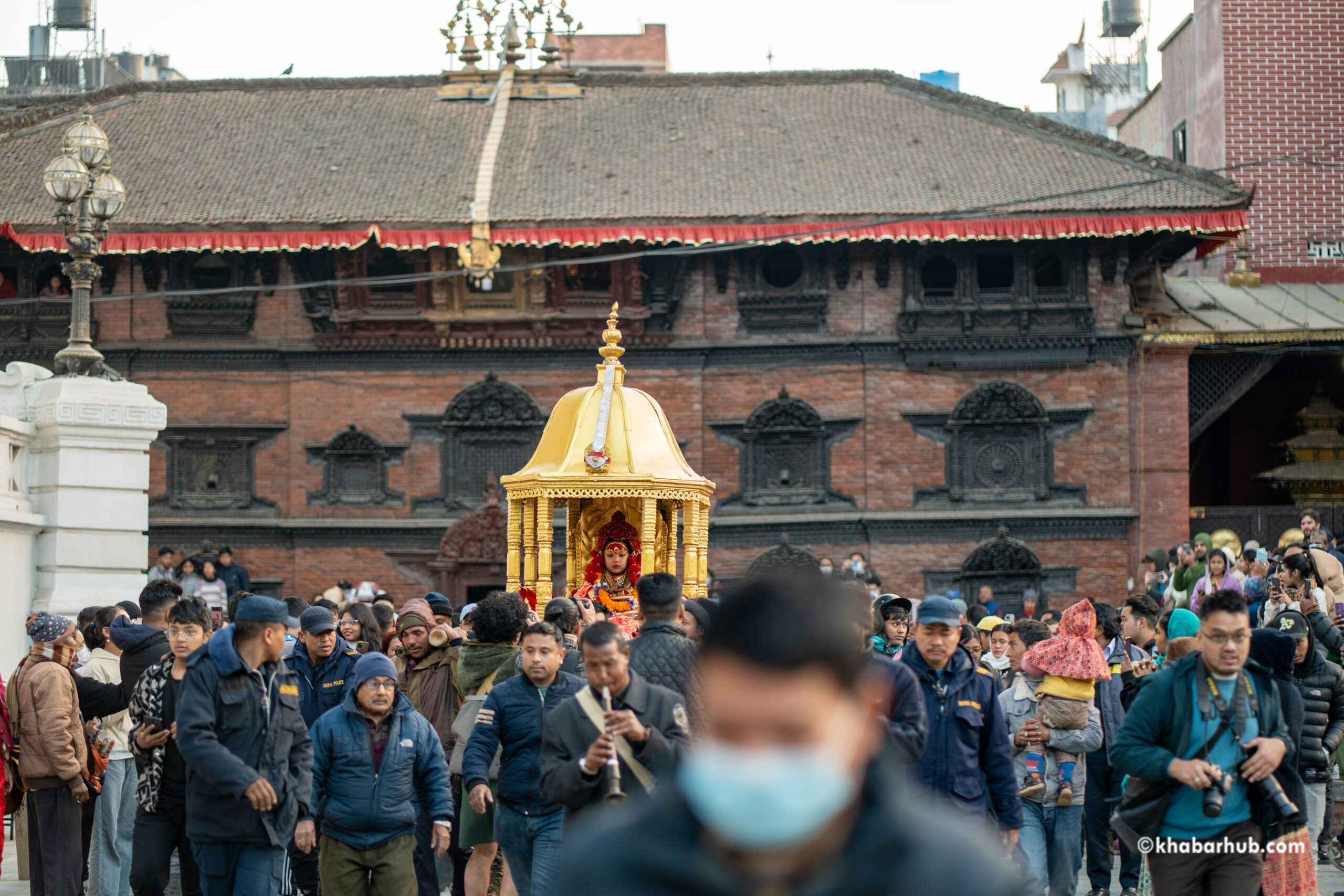
Solemn Duties and Rituals
There are, however, a common misconception that Kumari’s feet must not touch the ground.
Gautam Ratna Shakya, a dedicated caretaker from a long line of Kumari guardians, however, dispels the misconception saying that the belief of her feet never touching the ground is false.

“She walks on her own, even during significant events like Indra Jatra,” says Shakya.
The annual Intra Jatra celebration sees her paraded through the city in a golden chariot, a spectacle where her blessings were once sought by the reigning monarch.
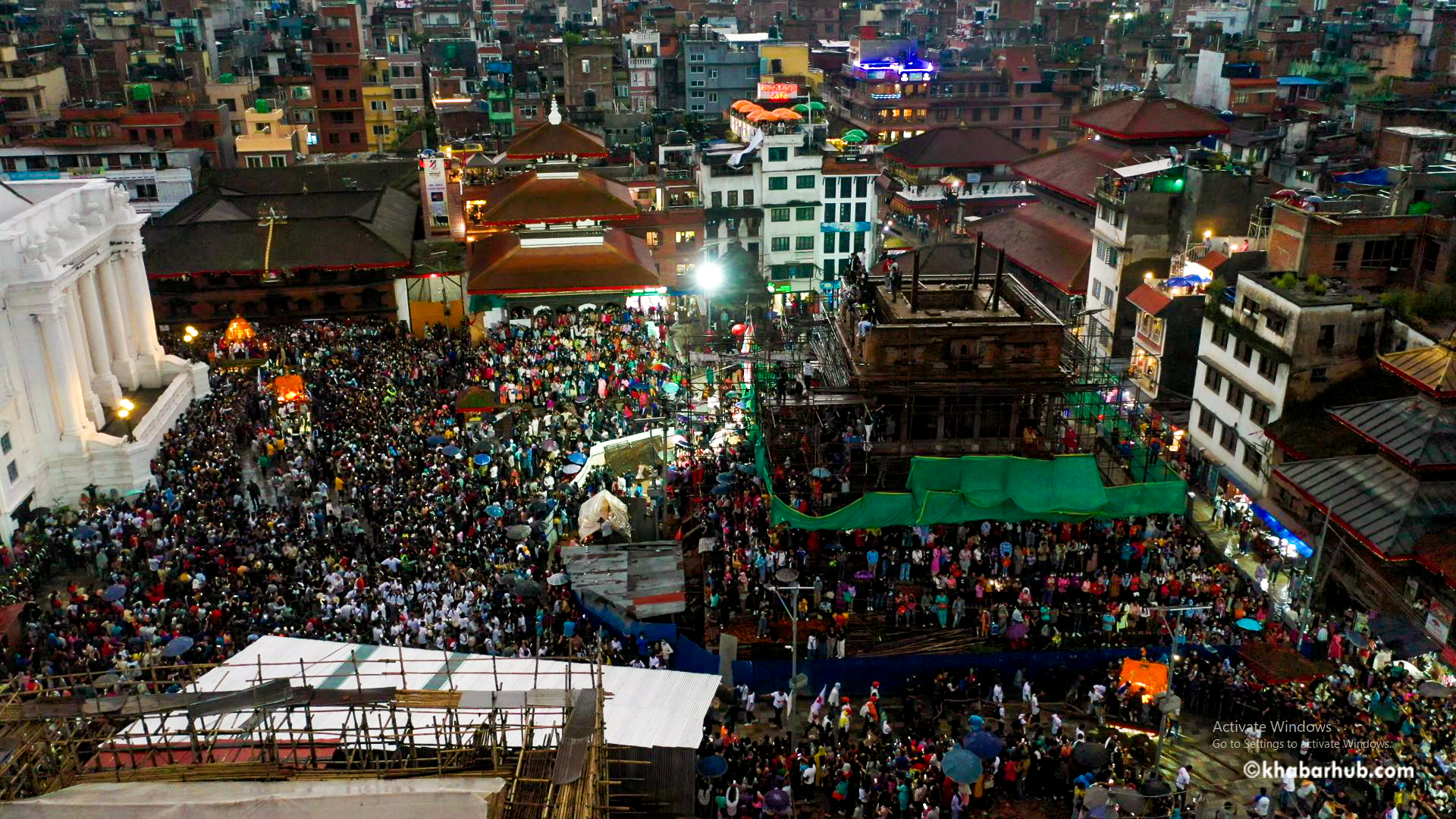
Mysterious Selection Process
The process of selecting Kumari is shrouded in mystery. Speculations abound, from astrological readings to intimate physical examinations.
The chosen one must possess extraordinary physical attributes, resembling the perfection of a “bodhisattva”.
Tales of dark initiations and solitary nights with ghosts add to the mystique surrounding her selection.
Life in Seclusion

Once selected, Kumari leaves her family and resides in Kumari Chen (House).
Her family members are restricted from direct interaction; they can only seek her blessings by touching their foreheads to her feet.
Dismissal occurs at puberty, with another girl chosen to replace her. The transition back to mortal life is complex, with rumors suggesting former Kumaris may be destined to lead solitary lives without marriage.
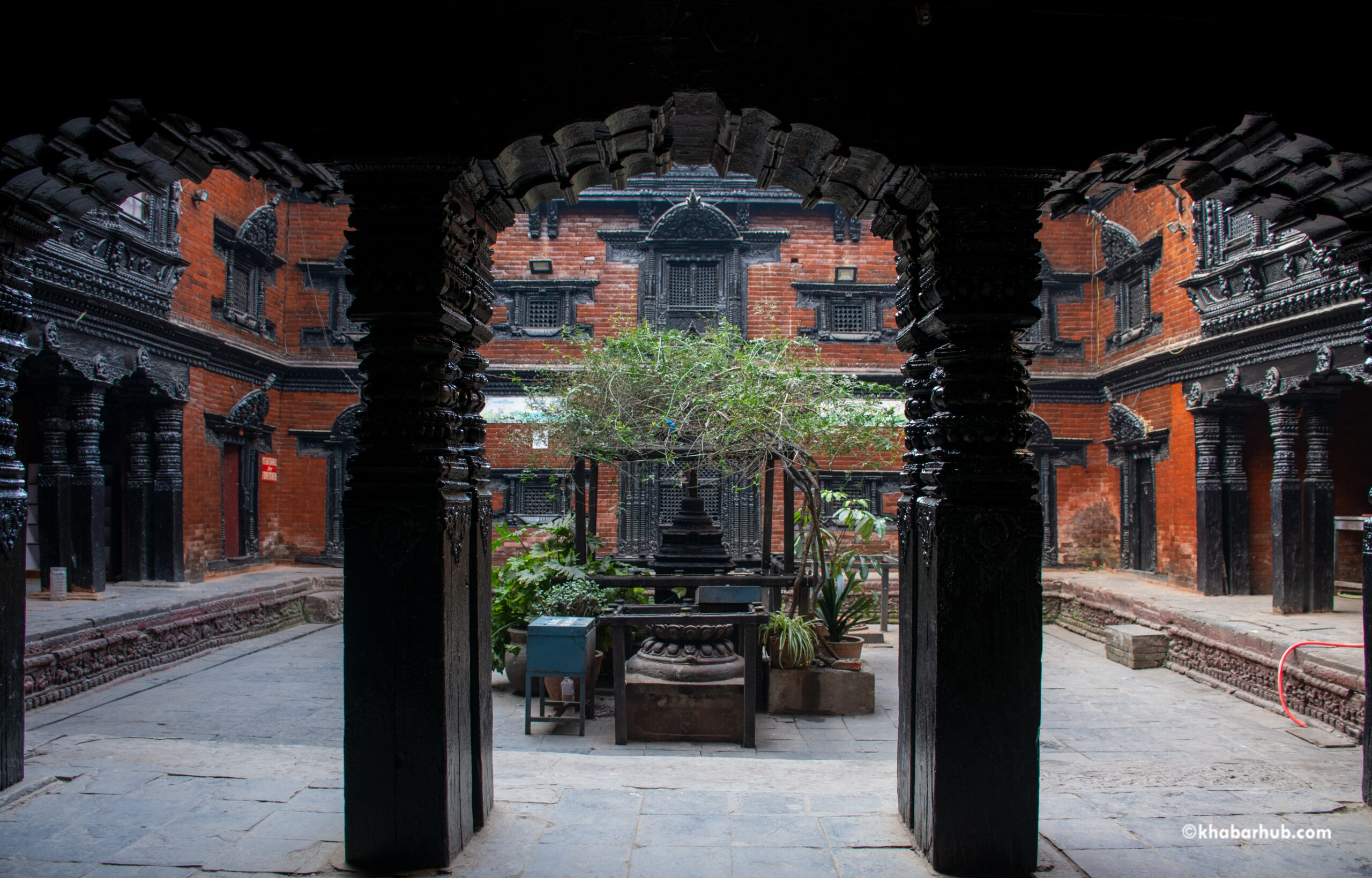
Unveiling the Unknown
While common knowledge about Kumari prevails, much of what transpires within Kumari Chen remains a closely guarded secret.
Speculations include night rituals and resilience tests, depicting her unwavering connection with the divine.
The veiled world of Kumari continues to be an enigma, fostering fascination and reverence for this living embodiment of the divine in Nepal’s rich cultural tapestry.

Demystifying the Kumari: A Glimpse into the Everyday Life of the Living Goddess
In the midst of mystical tales surrounding the Kumari – the Living Goddess of Kathmandu, Shakya dispels the rumors that have long veiled the life of this divine figure.
“As rumored, the Kumari does not live a secluded and ritualistic existence. The current Kumari, an eight-year-old, enjoys a lifestyle akin to any child of her age,” Shakya asserts.
According to Shakya, she possesses a cell phone, watches television, and engages in play with her family and school friends.
Shakya emphasizes that the belief of her feet never touching the ground is false, highlighting instances where she walks on her own, even during significant events like Indra Jatra.
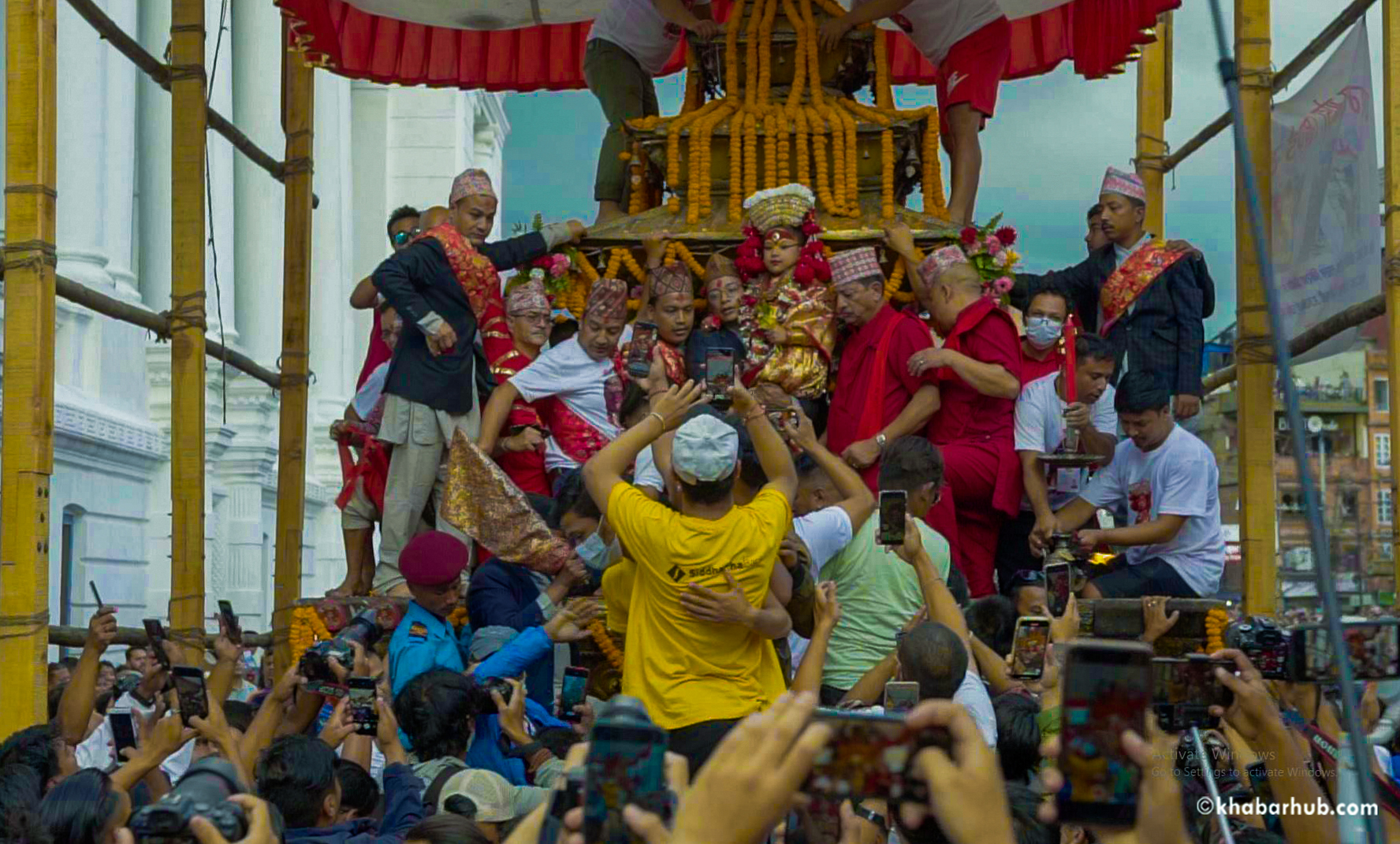
Educational Pursuits
Addressing another misconception, Shakya reveals that the Kumari actively participates in educational activities.
With daily pedagogical sessions from 12 noon to 4 PM, she is taught by a dedicated school teacher and engages in examinations, according to Shakya.
School friends and classmates visit her regularly, fostering a sense of normalcy in her educational journey, he stated.
Family Interaction and Devotee Blessings
Challenging the idea of familial isolation, Shakya further clarifies that Kumari’s family members are allowed to embrace and touch her.
“Devotees, too, are granted a time slot from 9 AM to 11 AM to visit, touch their foreheads to her feet, and seek blessings,” Shakya adds dismantling the misconception that Kumari should not smile, emphasizing her innocence as a child and a beautiful soul.
Former Kumaris
Regarding the fate of former Kumaris, Shakya provides evidence that ex-Kumaris do get married, have families, and lead happy lives.
While some choose to remain unmarried, it contradicts the notion that their post-Kumari life is solitary and devoid of societal interactions, according to him.
Mysteries of Kumari Selection
Shakya further dismisses prevalent myths surrounding the selection process.
Families with newborns are invited to submit astrology reports when the Kumari turns 11.
Astrologers and tantric priests analyze the reports to determine suitability. Dark initiations and terrifying ordeals are labeled as baseless rumors, and Shakya asserts that the selection process is meticulous and devoid of such practices.
A Day in the Life of Kumari
Highlighting the routine of the Living Goddess, Shakya describes a day that commences with morning rituals and puja, followed by breakfast.
Devotees receive blessings until noon, after which the Kumari dedicates her time to learning.
Evenings are for personal activities, including play and technology use. Nights are spent on homework, television, and bonding with those in her household, providing a glimpse into a life that, despite its spiritual responsibilities, maintains a semblance of normality.


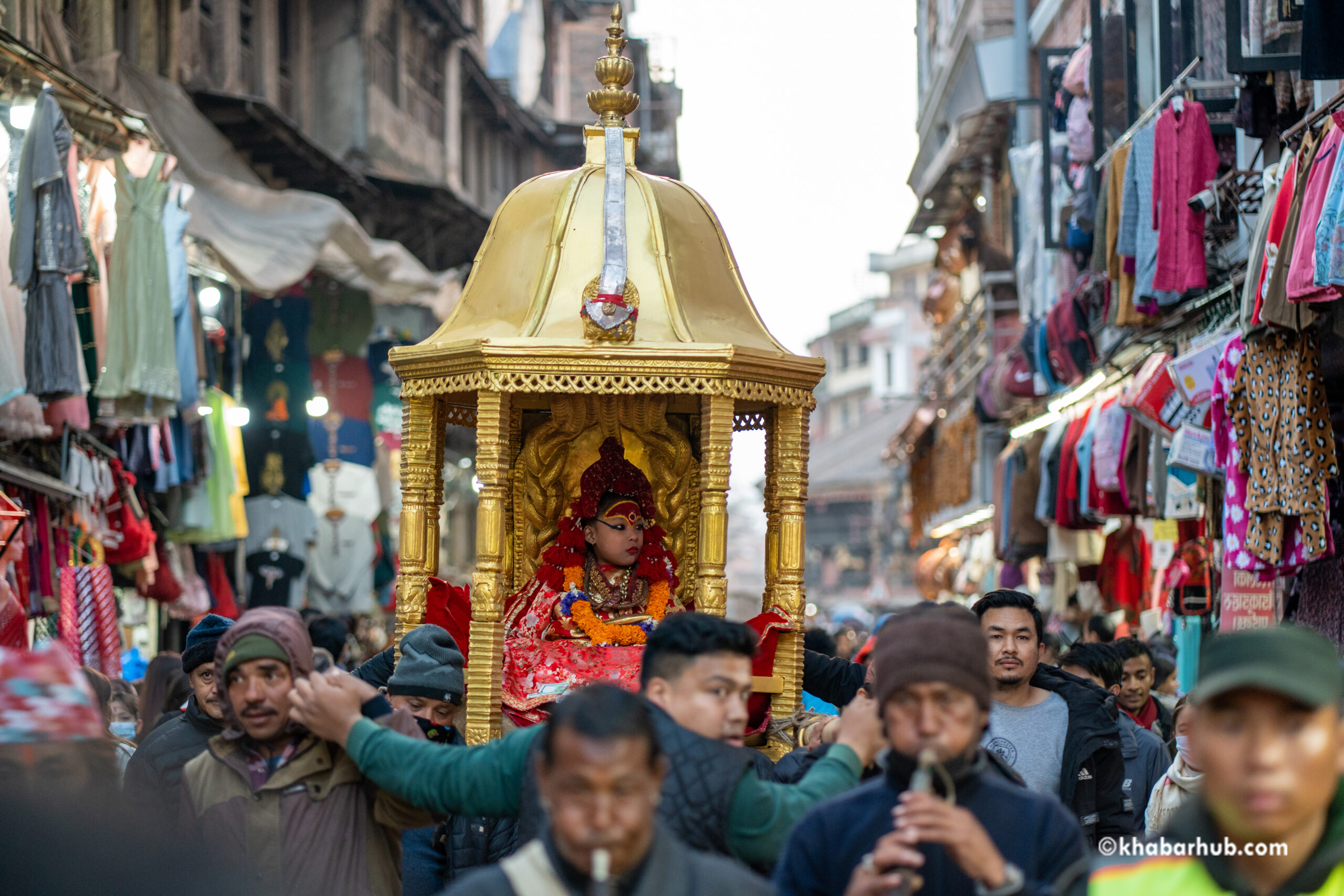






Comment